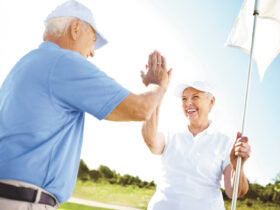“All engines require maintenance, and your heart is no different.”
 Michael Bolanos, M.D., is a cardiothoracic surgeon who joined the heart team at Venice Regional Bayfront Health a little over a year ago. He specializes in surgical treatment options for atrial fibrillation, coronary artery disease, and valvular heart disease. In this Q&A, he talks about trends in his work in South Sarasota County, especially during the COVID-19 pandemic, and what you can do to guard your heart health.
Michael Bolanos, M.D., is a cardiothoracic surgeon who joined the heart team at Venice Regional Bayfront Health a little over a year ago. He specializes in surgical treatment options for atrial fibrillation, coronary artery disease, and valvular heart disease. In this Q&A, he talks about trends in his work in South Sarasota County, especially during the COVID-19 pandemic, and what you can do to guard your heart health.
Q. During your time at Venice Regional, most of it during COVID-19, what trends have you seen among the heart patients seeking care from the hospital’s heart team?
A. When I started, I learned that many residents in our community were seasonal and that the late spring and summer months were usually less busy at the hospital. Largely because of the pandemic, many people decided to stay in our community rather than heading north as they usually do. That meant more people have stayed local and have needed care for a variety of conditions.
Q. What has been your greatest concern for the heart health of local residents during COVID-19?
A. We know that COVID-19 can have serious heart and lung consequences in some patients, so first and foremost people need to follow the Centers for Disease Control guidelines about social distancing, wearing masks and washing hands. Believe me, you don’t want to contract this disease, especially if you are someone in the at-risk category. Another effect of the pandemic is that some people may be delaying care or down-playing symptoms because they are concerned about exposure in a medical office or from being in a health care facility where COVID-19 patients could be present.
Q. What would you advise those folks?
A. All engines require maintenance, and your heart is no different. It’s an engine that pumps blood. Just like a car’s engine, especially as the car ages, routine maintenance is essential to keep the engine running. I know our hospital, emergency room, and affiliated specialty practices, as well as the Venice HealthPark outpatient surgery center, have become very experienced with COVID-safe protocols. Like many health care providers around the world, we have implemented other modalities to visit with patients either in person or through a media-based platform. Get your regular checkups, talk to your doctor about any symptoms that may concern you, and know that we are here to help you in a safe environment.
Q. In your work with the Venice Regional heart team, what issues are you seeing with patients who have delayed care?
A. Perhaps one of the most common surgeries we perform is coronary artery bypass grafting. This often is the end result of a complete workup performed by cardiologists, including a left heart catheterization, which diagnoses blockages in the major arteries of the heart. Coronary artery disease can manifest in many different ways, including atypical chest pain, or angina. This can present as something as common as heartburn that does not seem to go away, but may actually indicate something more serious.
Q. Are there any other common conditions you treat that patients may overlook?
A. An example of a common condition that cardiologists and cardiac surgeons
1rea1 is atrial fibrillation, or Afib,” which affects the heart’s ability to pump blood normally and predisposes people 10 having strokes. This is the mos1 common cause of irregular heart rhythm in the United States. Afib frequently has no major symptoms. A patient may say they feel fatigue, an occasional llu1-1ering in their ches1, or shortness of breath.
Q. How is Afib diagnosed?
A. Generally, a doctor will start by ordering an ECG. ff Ibis fails 10 detect any abnormalities, but the history is very suggestive of some underlying heart rhythm abnonnalily, further workup would be warranted. Thai may often include having the patient wear a heart monitor for a period of days or weeks. The device captures irregularities in the heartbeat and rhythm.
Q. If someone has Afib, what can you do to help?
A. We have a number of surgical treatment options for Afib, and one of 1he most exciting new developments bas a long name: thoracoscopic minimally invasive left atrial appendage ligation. Afib can cause blood to pool in an area of the heart called the left atrial appendage, or LAA. There, blood cells can stick together and form a clot When a blood clot escapes from the LAA and travels 10 another part of tbe body, ii can cut off the blood supply 10 the brain, causing a s1roke. Closing off Ibis part of the heart is an effec1i ve way 10 reduce stroke risk.
Q. How do you close off the LAA?
A. One way is with an implantable device. Another way is 1be thoracoscopic LAA!igation where we place special clips to seal off tbe LAA using small incisions and a camera. It’s highly effective in a majority of cases and is a great option for patients wi1h atrial fibrilla1ion who cannot 1ake blood thinners or simply do not want to. For many patients, this procedure requires only an overnight s1ay in the hospital, and recovery time tends to be one to 1wo weeks. Of course, resuhs can vary, but we are seeing excellen1 outcomes using this procedure.
Q. Do you have any parting thoughts for people trying to stay heart-healthy in the age of COVID-19?
A. As always, a healthy lifestyle -proper nutrition, exercise, good sleep and not smoking – will go a Jong way toward keeping your “engine” pumping. Routine maintenance through regular checkups is essential. And finally, don’t delay care. Our hospital is safe and clean; implementing technology in cardiac surgery while guarding against the risk of infectious diseases, including COVID-19. Our 1eam at Venice Regional aims to provide a concierge-type approach to healthcare, and we are available to help you navigate these difficuh times 10 protect and improve your health.
Venice Regional Bayfront Health
Call 941-483-7579 or visit VeniceRegional.com







